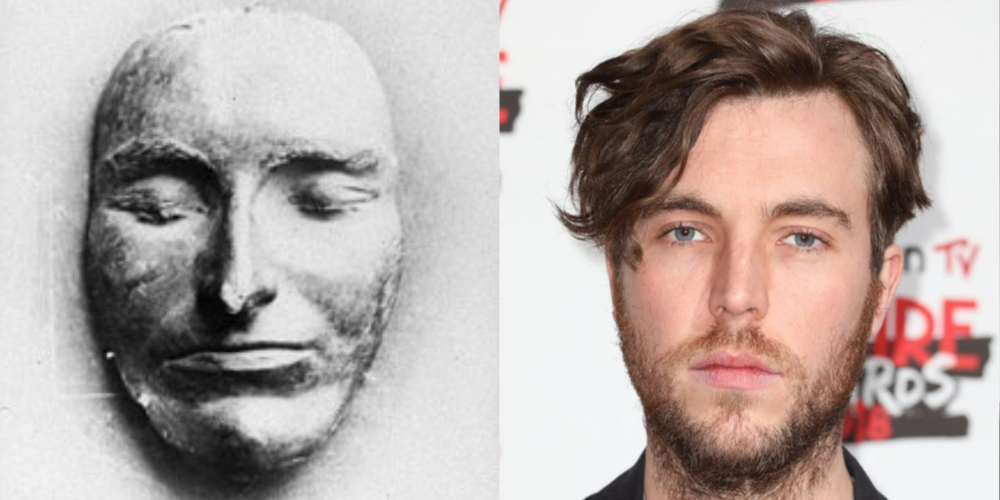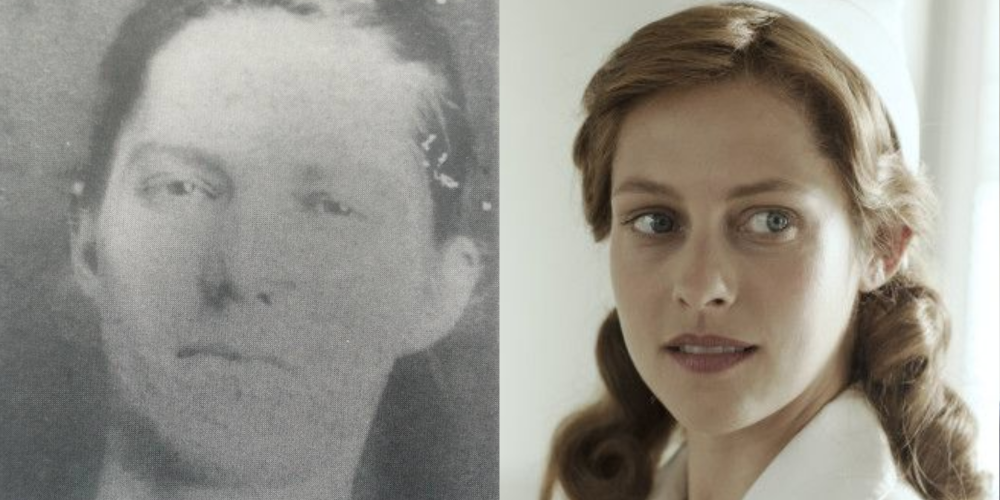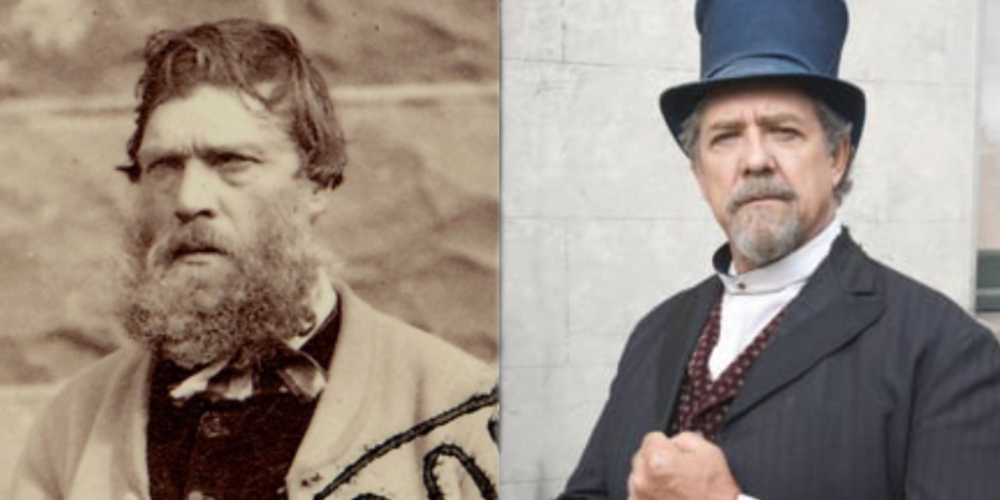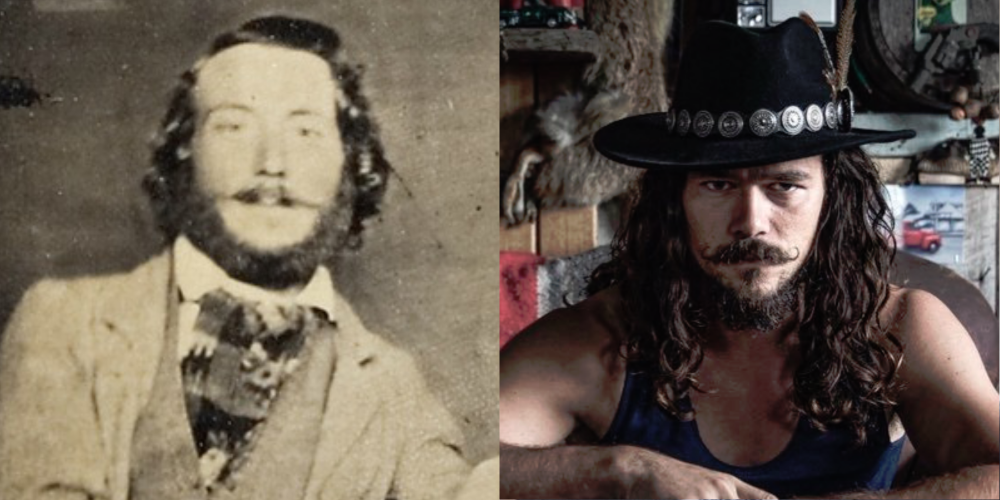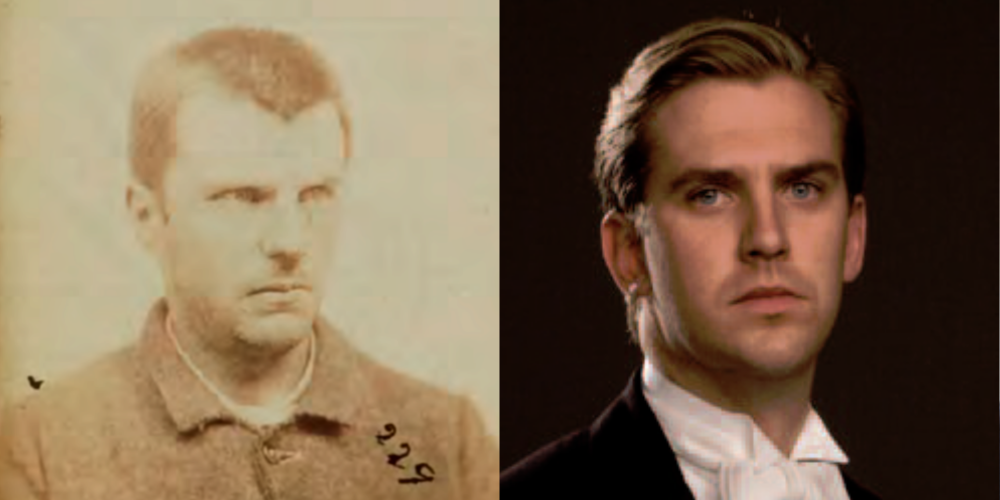
Empire (Sydney, NSW : 1850 – 1875), Thursday 12 December 1867, page 2
BUSHRANGING AND OUR POLICE SYSTEM.
BY A NATIVE TROOPER.
PART XII
PROSPECTING FOR TRACKS.
After going some seven or eight miles in the scrub at the base of the mountain and being scratched and torn to pieces we resolved to get out again, as it was near night and not a blade of grass to be seen to feed the horses. We came out and ran round some eight or nine miles further where we camped at about 8 o’clock near some good grass and water. Next day we tried another place, and came out on the marked tree line with plenty of grass all through, and a shade too much water, for at night we had to place stones and sticks to sleep on — a bed I can recommend for making people weak. We kept on scouring till we came to a shod track. This we followed hopefully till it led towards a station where the ground was covered with all sorts and sizes of horse-shoe tracks. Ac cording to our information from the S. C. at Narrabri there must be a great many bushrangers out in this direction. At last we selected one track, and followed it many miles, hoping it would lead to the particular haunt of Ward (Thunderbolt). His track did not go to the stations but shied off as if out of sight. I felt persuaded this track was that of Mr. Ward coming down from Gallathera Plains to see his wife, who was stopping at a sheep station with a half-caste shepherdess. But I did not then exactly know the spot, although I had traced her out in that direction. We lost the track at last on a short grassy flat — the worst possible place for tracking.
Having run out of rations we made across to Barraba to see our other two Braidwood police, and to see if we could not form a plan to work in conjunction with each other. We arrived at Barraba half starved.
There was a police station there but no feed for horses. We stopped there two days to spell the horses. We formed a plan; the tracker was to go with one trooper, and the other was going with me. We were to meet again in three days at one of Mr. Lloyd’s sheep stations— some forty miles off.
A NOVEL SPECTACLE.
The second day we came to a sheep station hut, and out came a great big half-caste gin, as surly as you please, who told us plump we were after Thunderbolt, but were fortunately off the scent. She poked all sorts of fun at us which we took in good humour, and went away in a different direction to our meeting place. But we had not got a mile away before we heard a row behind us. It was a clear ground, and on looking back, lo and behold there were two big gins coming racing mad after us on stock horses, standing up in the stirrups, their petticoats flapping in the wind. They both sat astride over the saddle.
They pulled us up. The big one came close and said she would introduce us to her cousin Mary, who had just come home, having been away to see her father, and now she wanted a husband. This cousin Mary did not come nearer than two hundred yards, so we were unable, having no opera glass, to look at her charms. We saw she kept eyeing us, with her horse reined up on the spur ready for a charge. This was done to see if we knew her.
THUNDERBOLT’S WIFE.
I became suspicious and surmised we were near the presence of Mrs. Captain Thunderbolt. As soon as she reined up we became suspicious, the more so when she eyed us over with such curiosity; but we said nothing as we wished to make her believe we were gulled. So I told the big gin that I wanted a wife, and would be glad of an introduction. After a good deal of persuasion the lady came up when my mate introduced me to her as Mr. MacGatterie, and I introduced my mate as Mr. Squatter Dixon. I saw the lady eyeing me very closely all the time they stopped with us. I saw she had a suspicion that I knew her, and we had a job to get away from them. They would insist on our going back with them and have breakfast, but urgent business called us away. They watched us for miles, and it was not till we got in a thick scrub that we turned towards our place of meeting. We knew the direction and came to it all right. Our mates were not there, so we left word we would be at a certain place next night. We got some rations and went back to watch the gins; but we discovered they had watched us all the time. They came on us two miles from the hut. They told us where we camped, and where we got our dinner, and that we had come back to watch them. We saw we were check-mated, but did not let on. We had only then to consider how we could profit by our discovery, so we determined to stop in the hut that night, and pump them all we could. I found out it was the Captain’s lady, and a little more to, so we went to meet our mates but they did not come. To give the gins the slip we went across the mountains to Narrabri, seventy miles, and came out splendidly on a good road and in the midst of plenty of grass. I came across a friend of mine so we gave the horses a day’s spree. This friend put me up to a trick or two, and kindly offered to go out and show me one of Ward’s camping places. But I could not get a horse for my friend. He told me there were two of his horses at Ward’s camp, but I could not get a horse for him to go with us after them, and it was necessary that he should show us the road. So I got a direction, went out, but could not find the place. As I had to appear at the assizes in Sydney with reference to some of the Braidwood cases I told my friend and a few of his acquaintances to keep an eye on matters, and that I would be back before long. We had a scour through the mountains and became so familiar with them that we arrived at Barraba by a new route. In fact we could go through the mountains anywhere. We found our two mates at Barraba, where they had been delayed by the fancy colt — the quiet horse — which had thrown his rider unawares. One of the chaps want into Tamworth to see about getting some feed for our horses and a fresh horse for himself, but it was no go.
As I had to leave for Sydney soon I took the rest of the men, meaning to try once more and work my way into Tamworth. We came back to the gins’ hut and there I met a friend who told me Thunderbolt had gone down to Murrurundi, to stick the mail up; and the gin had gone to a certain place to meet him coming back. So I told the other chaps he had gone down but they would not believe me. I, therefore, started at once for Tamworth, taking the tracker with me — determined to get a fresh horse and to push on, as it was on my road to Sydney. Before I got in I met two police coming along the road who told me the mail was stuck up. This made me push on to the office where I asked for another horse —but there was none, of course — and they told me positively it was not Ward who had stuck up the mail but two boys. Putting two and two together I knew this to be false and told them so; but they were sure of it. I know, as far as circumstantial evidence can go, that it was Ward and not two boys — two boys, how absurd!c who stuck up that mail, for I was told on my way down all about it. And I also found out that if I could get back soon, I should be able to capture him. I had learnt a great deal about him, more than the stationary police could dream of. So certain was I that, although my resignation was in and the notice expired, I decided upon withdrawing it if I could go back to the north as soon as the Braidwood cases had been disposed of in Sydney. I applied, bona fide, to the Inspector-General of Police. My application was refused. If the Inspector-General was made aware of my application, he may have sent for me and asked my reason for wishing specially to withdraw my resignation to go to the North. I would have told him; but my mind is satisfied that the Inspector-General knew little of it except as a matter of form, and, as a matter of form, if at all, so placed before him. I intend in these papers to make no remarks as to the machinery of the head office. This is not the place. Let the centralised system be fairly tested and judged upon its merits. The time may come, and that soon, when it may be regretted that there were not established in conjunction with it, supplementary bodies in every district of the colony, of volunteer native troopers.
THE FEELINGS OF THE NORTHERN PEOPLE.
Now, the people up there are disgusted with the police, as they go from one station to another, without adopting any rational system to try and catch Thunderbolt. Here is Thunderbolt, a native of Windsor, I believe — I saw his mother in November — who has been out about four years, and sticks up the mail whenever he is hard up. He never, that I know, sticks up people in the bush. Why is he not captured? Have the people in the north not good reason to complain? Does it not seem as if the police were merely putting in their time? The country wonders, but I don’t wonder why he is not taken. I was six or seven weeks in the ranges, from one end to the other, and during that period never met or saw a policeman.
SHOOTING A WILD BULL FOR PRACTICE.
On one occasion I chased a wild bull and fired at him repeatedly to train our horses to it. We chased this bull for two miles, constantly firing, until we killed him. It occurred to me that this was about the best practice men should be drilled to who are sent after the bushrangers; for it teaches them to ride, to fire while galloping, and to exercise caution. For a wild bull, with a couple of bullets in a fleshy part will test a rider on the side of a mountain to keep beside him. One drill of that sort would be of more service to a man than twelve months drill in Sydney, and for the horse to. Well, if two or three of us could travel about, firing our arms off occasionally, and camping about without attracting the notice of the police, how long could a man whose object was occasional plunder, remain in those ranges without being taken? As things are now Thunderbolt can remain there five years longer, perfectly secure, with police stations all round him, and he may become the father of a numerous family. I know the men who were with me will try hard to take him, but what can they do? Their horses were done up when I left, and they were ordered to remain at home till they got fresh again. They wanted ammunition, but could not get it. They had only six rounds when I left, the most of this being damaged by camping out in the wet. The Gunnedah police were put on Ward in his camp, when I left, and my old tracker who was up there was left behind for some reason or other — it would be hard to tell. So they sneaked on the camp and blazed away at Ward and his mate, but they both got away on foot. The boy took one road and Ward the other — so ended the encounter.
THUNDERBOLT ELUDES THEM.
Well, my old mates, being out scouring, saw a man in the bush and called upon him, but he sloped, it being very scrubby. They only got one run down and one shot, when they lost him. Ward made down to the gins’ hut, or close to it, and the lady was talking to him, both on horseback, when up rode two of the Tamworth police and fired at him from a distance, it being open forest land. They had a splendid chance, but he again got away. As soon as my old mates missed him they met a friend, and were told that the boy, Mason, was making for a certain place. Their horses being used up they could not follow but sent a note to one of the police at Narrabri. This policeman went to the house, and the boy surrendered. Now if all the police helped one another like that how much better it would be; but they were natives, and good men, working together, but humbugged for want of proper officers over them — at least some officer who could tell a saddle horse from a draught horse before he paid £15 or £20 for him.
BUYING POLICE HORSES.
But some of the superintendents in buying horses, purchase mere scrubbers from a rich man to secure his favour. They give him a good price but the animal is a mere scrubber, unfit for the work. If a poor man came with a good stock horse fit for any bush work, they turn up their nose and don’t want him. Then word is sent to Sydney that they cannot get horses. In this way the men have to ride animals little better than donkeys, dearly purchased, and when they want to do anything, they cannot.
THE CONCLUSION.
Well, I was on X.’s case in Sydney. The first thing I did on arriving was, as previously stated, to write out an application to withdraw my resignation, stating, that I had good hopes of being able to catch Thunderbolt and would like to start back as soon as the Braidwood cases were over. X’s case and —’s were one, and should have been tried together, but sergeant V. had the case against Mick Connell, and to get him into it he wanted — to give certain evidence under a promise that my charge against her should not be prosecuted. There was a charge also, of stolen rings against this lady. Well, she did swear a few words but not before Mr. Butler, who prosecuted for the Crown, left the Court to indict her for perjury. X’s case then came on, and the charge against him was for aiding and abetting Tom Connell to escape — that is what we charged him with, and all the evidence we had against him. After long trial the jury returned a verdict of guilty on the second count — “aiding and abetting, &c.” That verdict, to my notion, was a true one, and according to the evidence, and the true case against him. But his Honor, as I understood, said they must find him guilty or innocent of the full charge, “accessory to the fact after robbery &c;” that there was no second count. The jury seemed staggered for a minute or two when they returned a verdict of not guilty. Then his Honor seemed astonished, but acquitted him. He was then charged with sticking up Chinamen on two occasions, but there being only one Chinese prosecutor there the case fell to the ground.
The cases being over the lady was not tried, to the great glory of sergeant V., so I reported myself at the Police-office, and was told my application had not been sent in, but would be in the morning. Next morning I was told as my resignation was due there was nothing to prevent my being discharged — so I was discharged. Of course I thought it strange I should not have been allowed to go and try to take Thunderbolt when I had such a chance. However, I was half crippled then in my left wrist and they deemed it expedient to get rid of me. Such is the way of the world. Now, I had done as much active service for two years as any trooper in the force, and here was my reward. If crippled they might have aided me a little. If I had been a new arrival I might have got a brief pension. But I don’t want it. This country is my home, and in it I am able and can earn an honest living by the sweat of my brow. May every trooper who leaves the service be able to do the same is the wish of their old companion.
(CONCLUDED.)








